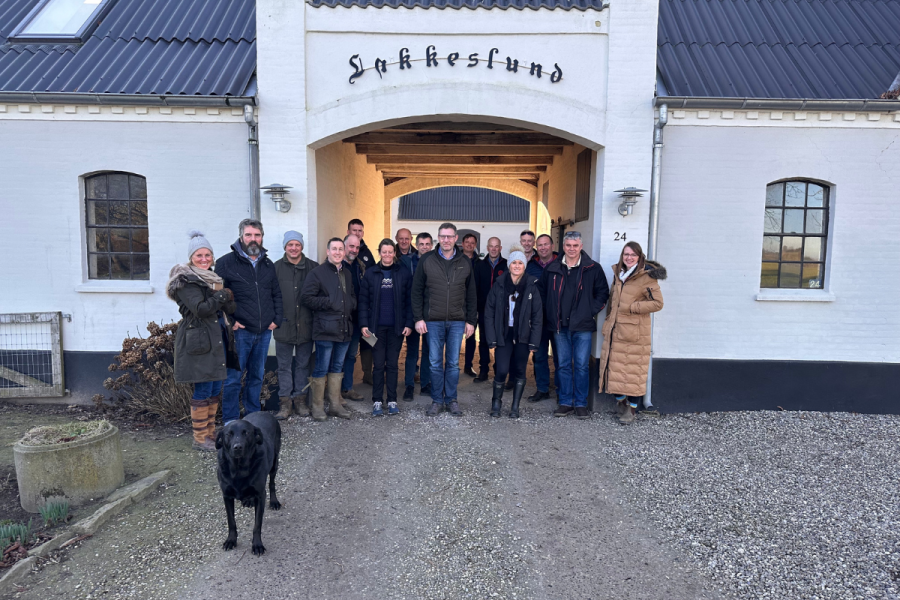Danish farmers are regarded as some of the most sustainability-savy growers in the world, but is this reality and where does the UK fit? CPM finds out.
“We’re perhaps further ahead than we give ourselves credit for in our collective journey towards conservation agriculture.”
By Janine Adamson
Regenerative farming, conservation agriculture and sustainable food production – words that to some are interchangeable, but to others distinct. Regardless of terminology, the ethos behind the narrative remains the same, whether that’s home in the UK or beyond.
At the heart is a shared desire to foster harmony between farming and the environment, something at which, until now, Danish farmers have been regarded as the trailblazers. However, a recent study tour hosted by Limagrain unveiled that, although the Danes have undoubtedly come a long way, UK farmers have achieved far more than they might have previously been given credit for.
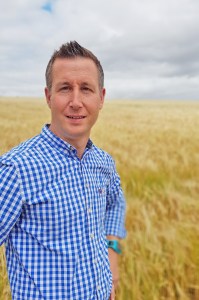
Danish farmers have a raft of strict regulation to contend with, so we wanted to learn about the creative methods they’re using to work within these rules, says Tom Barker.
The aim of the trip was to gain insight into agricultural practices and policies in Denmark and to refine the term of regenerative agriculture, explains Limagrain’s Tom Barker. “Danish farmers have a raft of strict regulation to contend with, so we wanted to learn about the creative methods they’re using to work within these rules, to help the UK to be ahead of the curve,” he says.
The study group was formed last year following a regenerative agriculture survey conducted by Limagrain and CPM. Six growers were then selected for the tour, accompanied by CPM’s 2020 Climate Change Champion Al Brooks, renowned regen advocate Tim Parton, and representatives from Limagrain.
After two jam-packed days in Denmark, the overriding feeling wasn’t envy, it was in fact reassurance – felt collectively by all in attendance.
“I was stunned by the amount of red tape that Danish growers are subjected to,” says Al. “They’re restricted, and although very invested in what they do and willing, they don’t have a voice with government and policymakers. I’ve realised that although we feel the need to push ahead in the UK, we’re already making considerable progress.”
The agricultural red tape referred to makes Danish authorities among the world’s strictest. For one, farmers are obliged to plant 10% of their land with cover crops and if they don’t, they have to reduce nitrogen by 50kg/ha the following season. Then there’s the Danish pesticide tax. Of course, these regulations aren’t without reason. Where other countries have failed, Denmark has successfully reduced the use of plant protection products as a direct result of policy implementation.
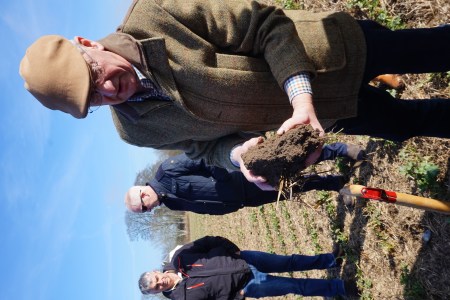
Danish farmer Søren Ilsøe describes his farming system as reducing intervention while increasing biodiversity.
Perhaps because of this success, Danish growers remain optimistic despite the restrictions. For the study group, this was brought to life by Søren Ilsøe from farming enterprise, Knudstrupgård. Søren sold the farm’s plough in 2000, transitioning to no-till and conservation agriculture the following year.
He describes his system as reducing intervention while increasing biodiversity, proudly sharing data with the group that confirms a rise in the number of earthworms, spiders, beetles, springtails and farmland birds. “Our future will be bright if we can overcome all of our challenges,” says Søren. “However, we have to continue to learn and develop, with a potential CO2 tax on the horizon.”
Engaging in research has been a key driver for Søren, who’s been working alongside the University of Copenhagen and consultants Agrovi on the ‘green fields and strong roots’ project. He has hopes of further research projects investigating topics such as infrared scanning for slug management, and non-chemical weed control to reduce glyphosate reliance. Clearly for him, technology is playing a pivotal role in navigating regulatory constraints.
Whereas Søren made the bold move to cut back on heavy machinery, Bente Andersen from Svejstrup Østergård combines three approaches – no-till, harrow and plough. This is very common in Denmark, she explains.
“Running one system alone wouldn’t suit all of the land that we have. Some might say this isn’t financially viable, but that’s not the case. We run our systems independently according to soil type for example, and when we do use the plough, it might be once every five years or so to reduce the weed burden. It works.”
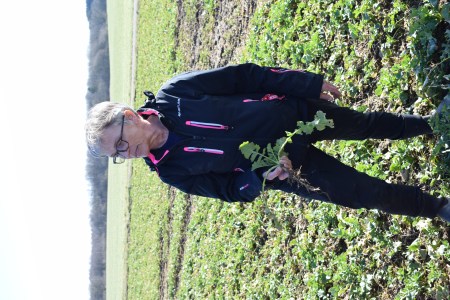
Working closely with Limagrain on varietal selection has enabled Bente Andersen to overcome clubroot in oilseed rape.
Bente runs the mixed arable and livestock farm alongside her husband Karl Jokumsen and son Anders Jokumsen, as well as acting as an independent consultant and soil tillage expert. Working closely with Limagrain on varietal selection has enabled the farm to overcome issues such as clubroot in oilseed rape, selecting the high yielding and hardy variety, LG Scorpion. As seen on the tour, the crop is notably healthy and free from cabbage stem flea beetle damage, which despite being present on other Danish farms, doesn’t pose the same threat as in the UK.
Although the viability of British OSR remains on the minds of many, Limagrain’s Liam Wilkinson remains confident in the crop’s future. “Some might question the role of OSR in sustainable agriculture, but breeders are creating opportunities to drive the crop forward,” says Liam. “This isn’t only in terms of disease resistance, as demonstrated in Denmark, but by offering wider benefits such as the unique N-flex trait found in hybrid varieties LG Ambassador and LG Aviron. N-flex minimises yield losses in sub-optimal N conditions, making a variety adaptable for both high and low input scenarios.”
Therein lies the focus of Limagrain’s development strategy – understanding how varieties fit within regenerative farming and conservation agriculture. The importance of this was confirmed while in Denmark during a presentation by Sejet Plant Breeding, led by managing director Birger Eriksen.
Due to the Danish pesticide restrictions, Sejet has long focused on developing varieties with not only high yield potential, but rounded and reliable disease resistance too, explains Birger. Using UK breeders as agents means these varieties are progressing onto the AHDB’s Recommended List (RL), introducing ‘Danish levels’ of disease resistance into the UK market.
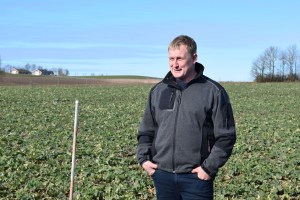
The study group learnt that alongside mother Bente, Anders Jokumsen combines three approaches – no-till, harrow and plough.
“Breeders have a role to play in finding and developing new varieties that don’t have yield as the main focus,” says Birger. “Creating resilient regen-viable varieties is the future, as well as making more of the existing varietal toolbox that we have available,” he adds.
For Limagrain’s arable technical manager Ron Granger, this struck a chord. “Successful plant breeding doesn’t happen overnight, even with fast-track techniques such as double haploid production, as seen during our tour of Sejet,”says Ron. “As it stands, we have two areas to focus on – optimising and making the most of the varieties we currently have available, and then using this insight to adjust or tweak our future breeding programmes.
“We have to move quickly and adapt our strategy to address the upcoming challenges of the future. Some will be quick wins such as identifying stronger tillering, more robust varieties that are successful when drilled at a wider spacing. For other objectives such as rooting architecture, it’ll require a longer-term commitment.”
Ron also acknowledges that it’s important to not push breeding too far in the other direction by narrowing down to specifics. “I don’t believe this would be a positive outcome either. Regen is so nuanced and individual, what will work for one farmer may not work for the next. We just need a deeper understanding of the interaction between variety and external regen variables to help inform decision making,” he adds.
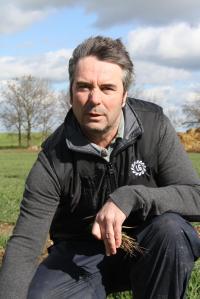
We need a deeper understanding of the interaction between variety and external regen variables to help inform decision making, believes Ron Granger.
For Danish farmers, aside from growing crops for food production, biogas production is big business. During the study tour, the group was introduced to Lars Nielsen of Fionia Agro, a mixed farm that boasts its own biogas plant. Here, growing crops for energy and ‘green gas’ is the primary objective, utilising waste streams such as livestock slurry from the farm’s 2200 sows.
In the UK it’s reported that less than 1% of gas comes from biogas, but for Denmark, it’s around 25% and rising rapidly. However, regulations that once supported the industry’s growth are about to become more restrictive, including a Danish political agreement to phase out maize as an energy source by 2025. This proved a reoccurring theme during the two days – regulation stifling creativity.
With this in mind, North Yorkshire farmer John Aynsley believes that although there are pitfalls, on reflection the scenario could be far worse for UK farmers. “We’re perhaps further ahead than we give ourselves credit for in our collective journey towards conservation agriculture,” he says.
“We think our regulations are bad, but I believe Danish growers would gladly come and farm under our conditions. The trip has been very educational, the crops are good and the land farmed well but there’s still a lot of ploughing taking place. I think there’s learning to be done for all.”
Tim Parton also joined the group, having previously hosted Danish growers at his farm in Staffordshire. He believes regulatory pressure means farmers and the Danish government are missing out on the true potential of regenerative practice. “It all needs to be readdressed,” he says.
Having returned to the UK, the group is now preparing for the upcoming season and part three of the study programme. For the six growers, they’ve already commenced their trial of new Limagrain wheat varieties LG Redwald, LG Typhoon and LG Aldaniti, drilled in autumn last year.

During the trip to Denmark, the group visited Sejet Plant Breeding where increasing yield potential isn’t the sole focus of its work.
These will be seen through to harvest and evaluated, based on the challenges of regenerative and conservation farming practices, to assess suitability. Having been on the tour to Denmark, Ron believes the three varieties, although very different ideotypes may have potential.
“Redwald’s the highest yielding wheat available on the current RL, but what makes it interesting for this practice is it has a very high tillering capacity, a semi-erect habit and a large biomass. This means it has the potential to fill wide rows and utilise the space available, hopefully without increasing seed rates as is often associated with a direct drilled, wider row situation,” he explains.
In contrast, despite not being as high yielding, Typoon offers notable traits for different reasons. “Typhoon is again a high tillering variety, but with a prostrate habit and slow development speed in the spring. We’d recommend this for growers thinking about earlier drilling especially if blackgrass risk is low.
“It offers a versatile hard wheat with a good disease resistance profile, stiff straw and orange wheat blossom midge resistance, meaning flexibility and security in difficult seasons. It’s an interesting variety and we’ve seen that when used in an early direct drilled, wide row situation, the full benefits become evident. It fills the rows and produces high yield potential.”
Third variety Aldaniti isn’t on the current RL but is national listed. Ron believes it may remain of interest to millers and those operating organic and regenerative systems. “Aldaniti is a stiff strawed awned wheat, boosted by exceptional disease resistance and good grain quality attributes,” he says. “This disease resistance package could support a low input approach for growers adopting conservation agriculture. During Limagrain demo trials, it really came into its own.”
By trialing these varieties on farm within regenerative and conservation agriculture-based systems, the study group will be providing insight currently unavailable through the RL. Limagrain believes this is only the start of the company’s journey.
“As shown in Denmark, the future relies on taking not only a farm-based, but field-based approach to agriculture,” says Tom. “The more information Limagrain can gather by placing our varieties in different situations with real growers, the greater chance we have of successfully supporting this.
“It’s vital that Limagrain identifies and futureproofs both agronomic and genetic traits suitable for anyone embarking on a more sustainable, conservational approach. There’s every chance that future government policy could enforce targets for environmental management, not dissimilar to Denmark. If we can achieve this of our own accord as an industry, even better,” he concludes.
Regenerative reconnaissance
As regenerative agriculture gains traction in the UK, CPM partners with Limagrain in a new series to gain an insight into varietal characteristics that may suit regen systems. To facilitate this, the series kicks off with a study tour to Denmark, a European nation widely acclaimed as leading the regenerative charge.
Next year, we’ll catch up with same group of farmers that went on tour to find out how their journey’s have progressed and what they’ve learned from trialling three Limagrain varieties on their own farms.
Sustainable agriculture is moving to a new era in which plant genetics play a greater role in the integrated crop management toolbox growers use to get the best from their crops. Limagrain started 50 years ago as a farmer-owned co-operative in France, and is now the fourth largest seed company wordwide. By developing varieties with higher yields, improved resource efficiency and reduced environmental impact, Limagrain is a major contributor to meeting agriculture’s sustainability goals.
This article was taken from the latest issue of CPM. For more articles like this, subscribe here.
Sign up for Crop Production Magazine’s FREE e-newsletter here.

